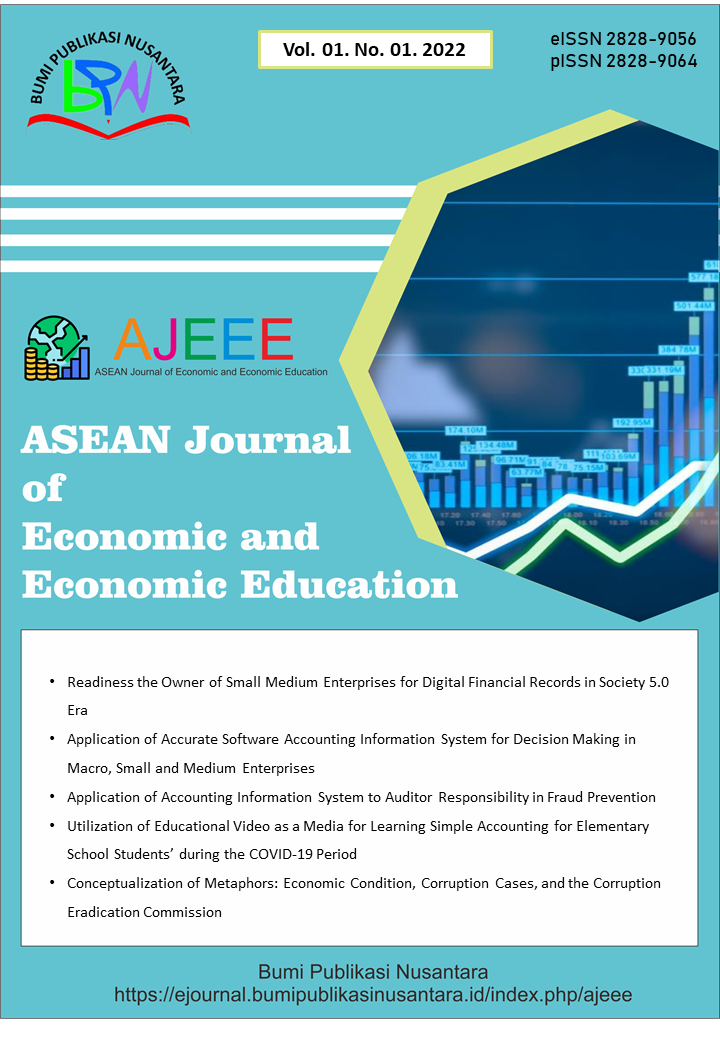Improving the Use of Marketing Strategies in the Modern Logistics System
 ), Ergashxodjayeva Shahnoza Jasurovna(2),
), Ergashxodjayeva Shahnoza Jasurovna(2),
(1) Tashkent State University of Economics
(2) Tashkent State University of Economics
 Corresponding Author
Corresponding Author
Abstract
Keywords
References
Boyer, K. K., Hallowell, R., and Roth, A. V. (2002). E-services: operating strategy—a case study and a method for analyzing operational benefits. Journal of Operations Management, 20(2), 175-188.
Christopher, M. (1998). Logistics and supply chain management. London: Financial Times. Prentice Hall. (2000)" The Agile Supply Chain." Industrial Marketing Management, 29(1), 37-44.
Daugherty, P. J., Bolumole, Y., and Grawe, S. J. (2018). The new age of customer impatience: An agenda for reawakening logistics customer service research. International Journal of Physical Distribution and Logistics Management, 49(1), 4-32.
Desai, A. N., Kraemer, M. U., Bhatia, S., Cori, A., Nouvellet, P., Herringer, M., Cohn, E. L., Carrion, M., Brownstein, J. S., Madoff, L. C., and Lassmann, B. (2019). Real-time epidemic forecasting: challenges and opportunities. Health security, 17(4), 268-275.
Efthymiou, O. K., and Ponis, S. T. (2021). Industry 4.0 technologies and their impact in contemporary logistics: a systematic literature review. Sustainability, 13(21), 11643.
Im, G., Rai, A., and Lambert, L. S. (2019). Governance and resource‐sharing ambidexterity for generating relationship benefits in supply chain collaborations. Decision Sciences, 50(4), 656-693., G., Rai, A., and Lambert, L. S. (2019). Governance and resource‐sharing ambidexterity for generating relationship benefits in supply chain collaborations. Decision Sciences, 50(4), 656-693.
Kim, C., Yang, K. H., and Kim, J. (2008). A strategy for third-party logistics systems: A case analysis using the blue ocean strategy. Omega, 36(4), 522-534.
Ruben, R., Dekeba Bekele, A., and Megersa Lenjiso, B. (2017). Quality upgrading in Ethiopian dairy value chains: dovetailing upstream and downstream perspectives. Review of Social Economy, 75(3), 296-317.
Sharma, A., and Iyer, G. R. (2012). Resource-constrained product development: Implications for green marketing and green supply chains. Industrial Marketing Management, 41(4), 599-608.
Stock, J. R., and Boyer, S. L. (2009). Developing a consensus definition of supply chain management: a qualitative study. International Journal of Physical Distribution and Logistics Management, 39(8), 690-711.
Tan, W. C., and Sidhu, M. S. (2022). Review of RFID and IoT integration in supply chain management. Operations Research Perspectives, 9, 100229.
Viswanadham, N. (2002). The past, present, and future of supply-chain automation. IEEE Robotics and Automation Magazine, 9(2), 48-56.
Article Metrics
Abstract View : 905 times
: 905 times Download : 628 times
Download : 628 times
Refbacks
- There are currently no refbacks.
Copyright (c) 2023 Bumi Publikasi Nusantara

This work is licensed under a Creative Commons Attribution-ShareAlike 4.0 International License.



_publication_ethics1.png)



